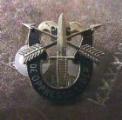we have to be careful not to mix levels here - I could see Slap and I were doing that yesterday. A picture speaks a 1000 words - so I attach my thoughts in one below.
Slap introduced me to Warden's rings (went back and searched for Slap's cite of what he considered the best article, which is linked
here). From that, I took Figure 1 in the chart below.
Warden's rings are a targeting model; and so, they feed into the Operational Requirements ring of Geoff Corn's model (which is on the national policy level). LTC (ret.) Corn is now a law prof, but as a JAG officer was involved in high level military and international law issues, including developement of SROEs, etc.
I hope the following will clear up any confusion. The two models can be used together. For that matter, any operational model can be tied in at Corn's Operational Requirements level. So, also various models feeding into the Diplomacy, etc. ring and the Law ring. So, Corn's model is one way of looking at things if you're at the NSC-JCS level of planning.






 So either way the indian indig population was a factor that would have had to have been dealt with and should appear someway somehow in the Design process whichever side you are on. At least that is my opinion.
So either way the indian indig population was a factor that would have had to have been dealt with and should appear someway somehow in the Design process whichever side you are on. At least that is my opinion.






 I don't know that one.
I don't know that one.

Bookmarks